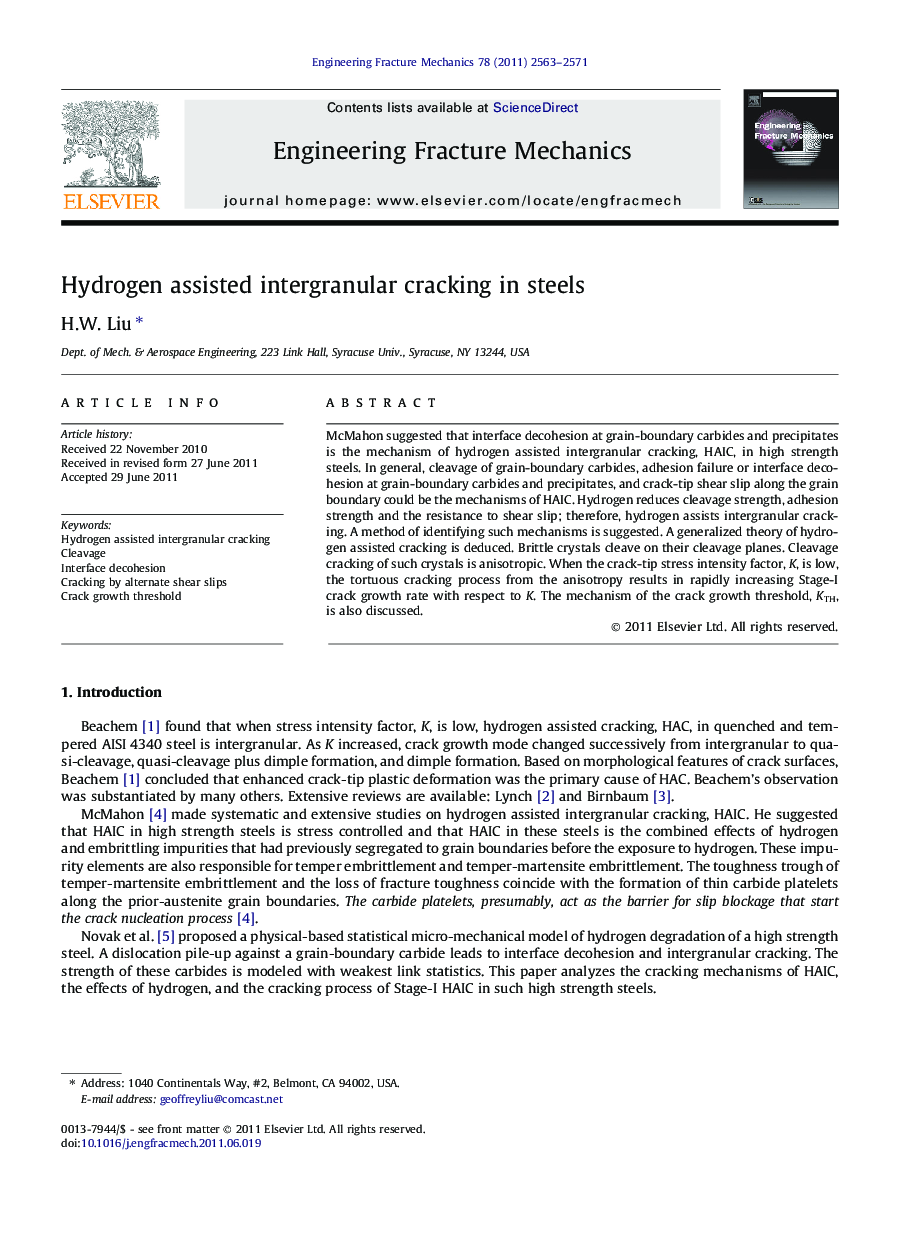| کد مقاله | کد نشریه | سال انتشار | مقاله انگلیسی | نسخه تمام متن |
|---|---|---|---|---|
| 775370 | 898315 | 2011 | 9 صفحه PDF | دانلود رایگان |

McMahon suggested that interface decohesion at grain-boundary carbides and precipitates is the mechanism of hydrogen assisted intergranular cracking, HAIC, in high strength steels. In general, cleavage of grain-boundary carbides, adhesion failure or interface decohesion at grain-boundary carbides and precipitates, and crack-tip shear slip along the grain boundary could be the mechanisms of HAIC. Hydrogen reduces cleavage strength, adhesion strength and the resistance to shear slip; therefore, hydrogen assists intergranular cracking. A method of identifying such mechanisms is suggested. A generalized theory of hydrogen assisted cracking is deduced. Brittle crystals cleave on their cleavage planes. Cleavage cracking of such crystals is anisotropic. When the crack-tip stress intensity factor, K, is low, the tortuous cracking process from the anisotropy results in rapidly increasing Stage-I crack growth rate with respect to K. The mechanism of the crack growth threshold, KTH, is also discussed.
► This paper examines the mechanisms, physics, and mechanics of hydrogen assisted intergranular cracking of high strength steels.
► The cracking mechanisms could be cleavage of grain-boundary carbide, interface decohesion, and crack-tip shear slip.
► A generalized theory of hydrogen assisted cracking is deduced.
► If the cracking mechanism is anisotropic, a small increase of K may increase Stage-I crack growth rate considerably.
Journal: Engineering Fracture Mechanics - Volume 78, Issue 14, September 2011, Pages 2563–2571